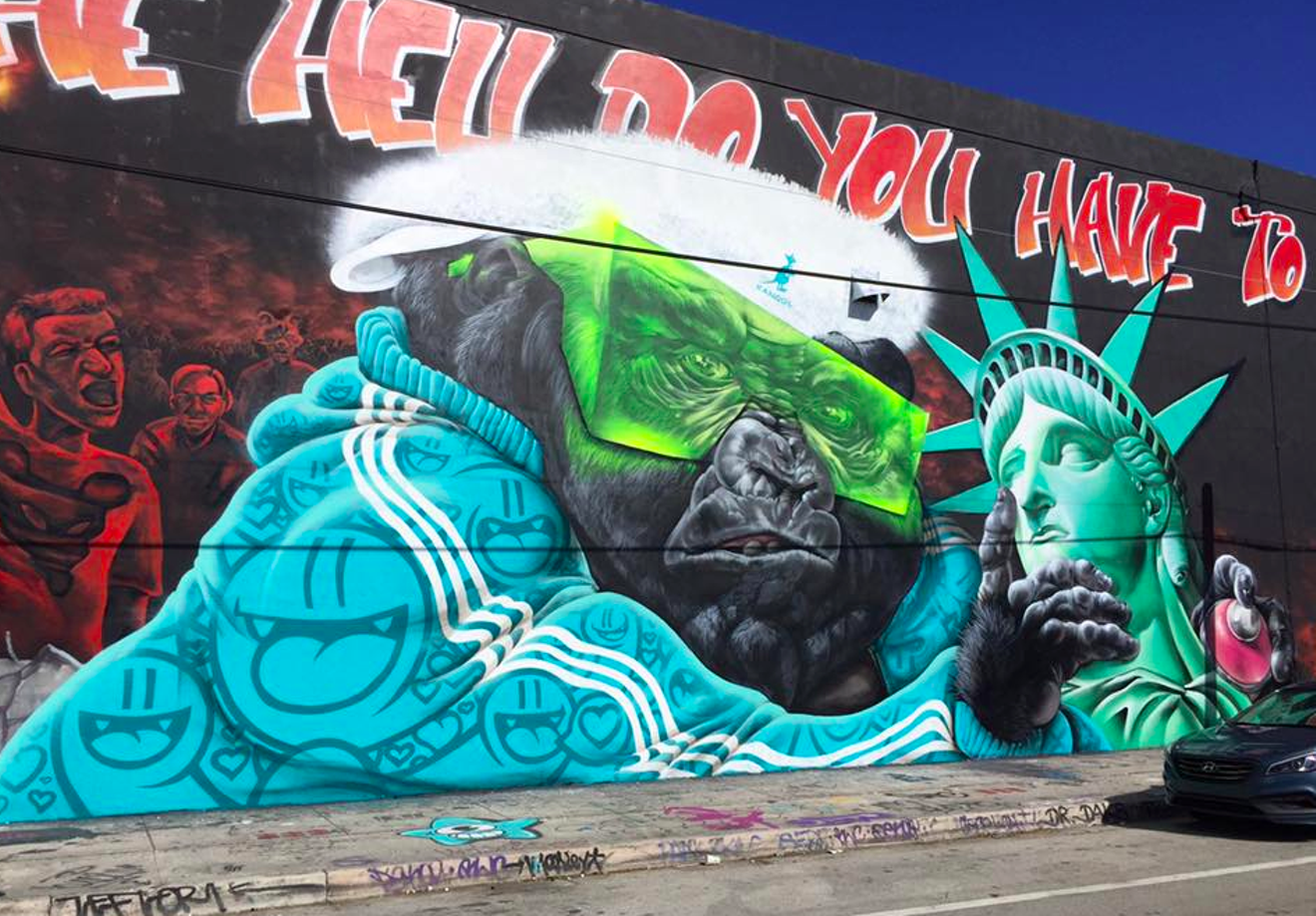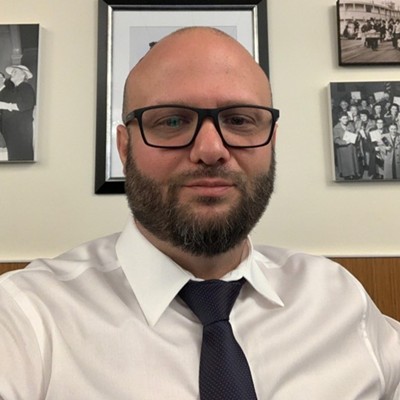The mural was a piece of artwork that stood out even in Wynwood, a neighborhood where the only buildings that look out of place are the ones that aren't covered in a rainbow of colors that would remind you of the outfits LMFAO used to wear.
Mana Urban Arts Project director Stan Sudol told New Times in October that the group put together the concept as a way to express what he and the artists of the Bushwick Collective feared would be the outcome of the 2016 presidential election.
A month later, their fears were confirmed: Donald Trump won the election, and he takes the presidential oath of office today. It was time for an update to the mural, and earlier this week, that update came. The new version of the mural features a gorilla where the Joker/Trump once stood.
"The change came from up the ladder," Miami-based artist Ruben Ubiera says. The Bushwick Collective sent orders to revise the work, "so the mural was going to change or be covered by something else entirely no matter what. It just so happens that my friend and colleague Golden was passing by at the right time and immediately asked what was going on. We were told that the mural had to change, so in the end, we opted to vary the mural rather than to change it entirely."
The Bushwick Collective did not immediately respond to New Times' requests for comment.
The revision had a lot of people speculating as to what the reasons behind the changes might be. Was Trump already scaring people off their right of expression? Were businesses being boycotted? Was there some sort of uproar? According to Ubiera, the answer is none of the above.
"[The response] has been surprisingly good — a ton of love. Models, videos, cars, tourists, locals [have used the artwork as a backdrop]. Great feedback," Ubiera says.
When fans ask Ubiera about the mural, he says, he just tells them it was "the powers that be."
"All in all, it was a labor of love. I hope people understand that I didn't choose to change the wall; it's not my wall to decide. But since it had to be done, let's act on it. Let's try to come correct."
Even though the mural's subject has changed to something less controversial, Ubiera believes the Bushwick Collective did what all artists should be free to do: use art as a form of a nonviolent protest.
"It's the last resort, yet one of the most important ones. It's crucial for artists to express their true feelings and emotions; it makes for better art and gives us a better understanding of the human race," he says.
"Art should be as diverse as the people who inhabit this planet. Hence the saying 'Beauty is in the eye of the beholder.' When art shines a light on a subject, it breaks the language barrier and travels fast. It's the closest that we can get to magic today."













